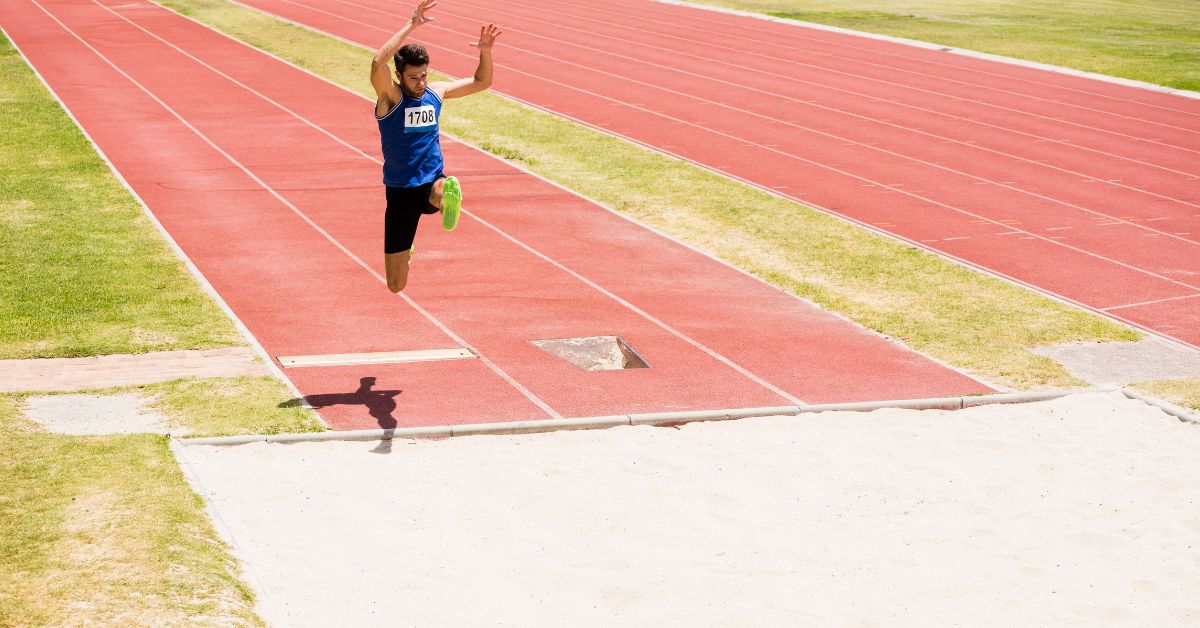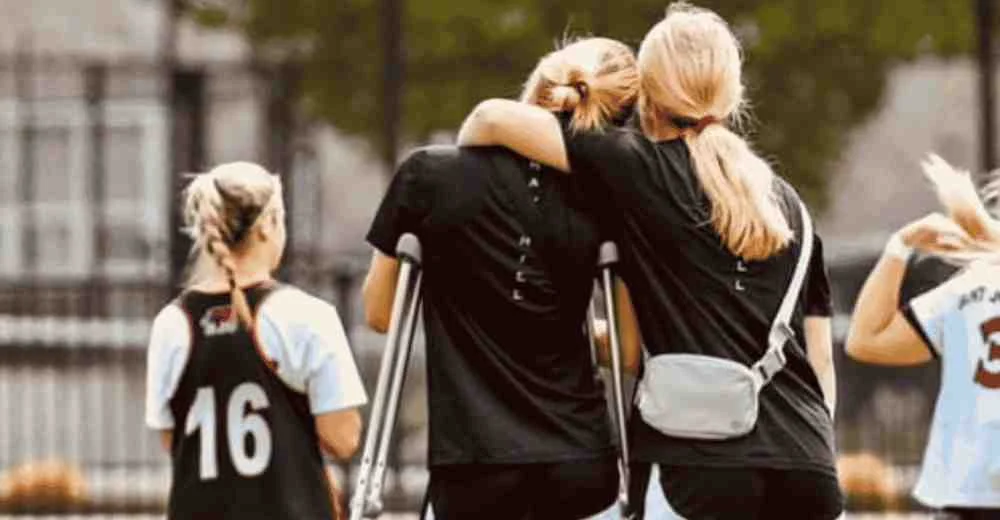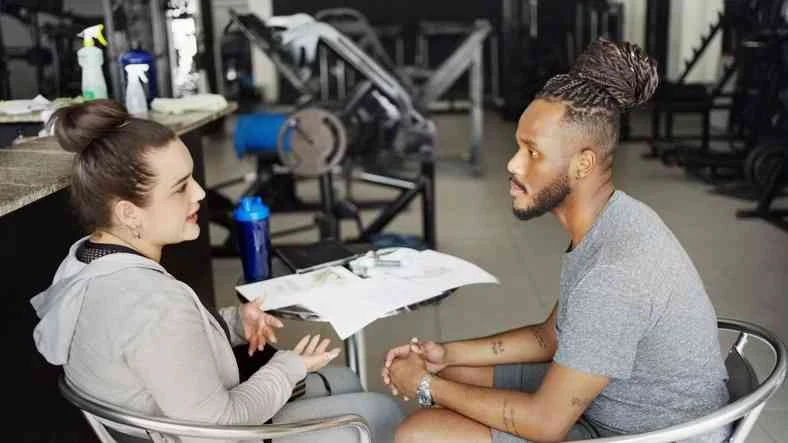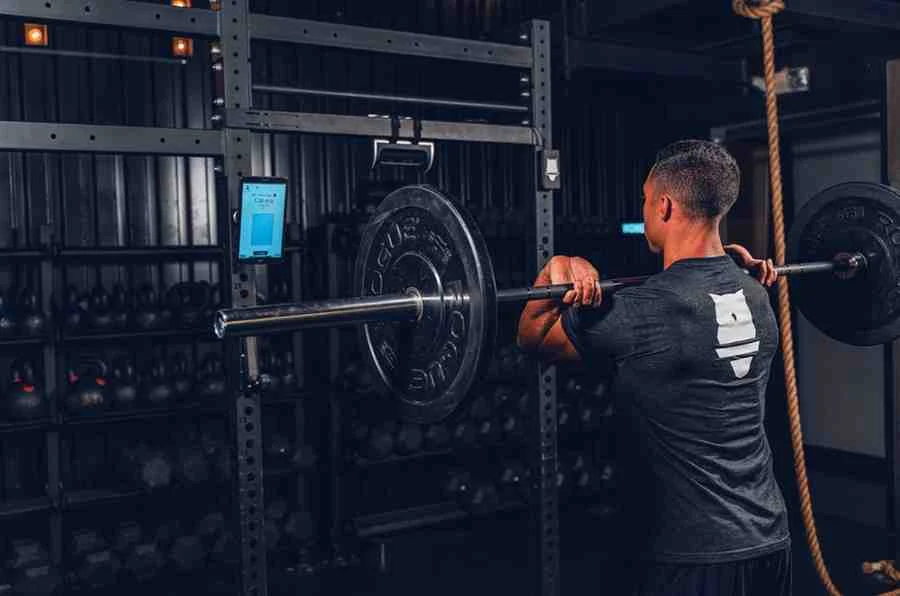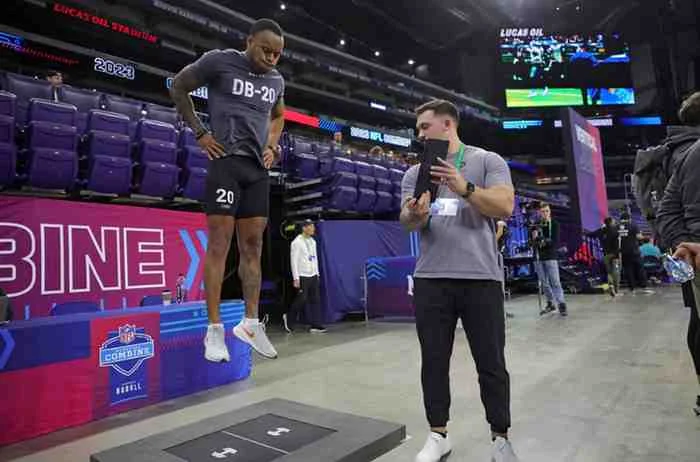[mashshare]

SimpliFaster virtually convened a roundtable of esteemed and experienced jumps coaches to cover a bevy of topics related to jumps. We will be presenting these questions, and their answers, in a series of articles. This is the third in the series, and covers the topic of individual training programs for jumpers.
SimpliFaster: Several key physical qualities determine success in the jumping events. However, it is common for jumpers of similar meet performances to possess different ratios of these qualities. How do you (or how would you in an ideal world) manipulate individual training programs based on your athlete’s strengths and weaknesses?
Travis Geopfert: We think it’s important from the very beginning to assess where our athletes stand in terms of basic movement patterns. Our athletic trainer, Cole Peterson, does a fantastic job of evaluating the basic movement functions of all our incoming jumpers. If there is a deficiency or weakness in any specific area, we create a plan to correct that right away. Nobody is perfect and everybody has something that they can work on in terms of functional movement, mobility, and strength. As we personalize these plans and see proficiency, it allows us to add speed and power and then we can move on from there.
For example, Clive Pullen and Jarrion Lawson are two very different but great athletes who, over time, had functional improvement in several basic things. As both proved they could handle it, we were able to add some key training elements that allowed them to succeed at the highest level. In general terms, the plans capitalized on Jarrion’s speed in the long jump and Clive’s power in the triple jump. Their individual training plans were VERY different. However, I believe they were highly effective specific to their individual strengths and weaknesses. Having said that, however, we first started with basic functional movement patterns and strength level assessment that allowed us to then layer on the training they needed over the course of three to four years.
Dan Pfaff: That is the art of coaching. Determining the KPI factors for each athlete and then ordering them in a hierarchy is a never-ending project for the coach. The KPI factors can change in type and order during the career or even the season. They differ based on biomotor factors, anthropometrics, training history, etc. There are generalities for this, but I think it’s dangerous to reduce these items into a formula.
In truth, programming is a hypothesis. You build out a program, run it, monitor it, and then formulate a new hypothesis based on evidence gained. I think it is a major error to tilt the table towards weaknesses. We like to polish strengths always and often, while slowly filling in the gaps in deficiencies and voids. I have seen way too many athletes destroyed on the “we can fix this weakness and then you will soar” train. If the athlete is healthy and enjoying the process, then we are on the right path. Disinterest and burnout are red flags that my ego has gotten in the way. Sometimes a weakness is a defense mechanism and should not be attacked directly.
If an athlete is disinterested or burnt out, it is a red flag that a coach’s ego got in the way. Share on XNic Petersen: Speed is always a cornerstone of everything we do. We train acceleration all year and we are always trying to become mechanically and technically better in everything we do. That being said, every athlete is different and must be treated accordingly. Not everyone can handle large training loads, or large doses of speed endurance. So, I have a template for the week, month, year, etc., and I plug and play different sessions and workouts based around the theme of the adaptation I am trying to elicit.
An example would be if we have a max velocity day. One athlete might do a fly 30 with a 30-meter run in, one may do a fly 20 with a 30-meter run in, and someone else may do a 100-meter fly with a 20-meter run in. This is all based on what is best for each individual athlete and their own strengths and weakness.
We do the same in technique as well. We may have short jump session in long jump. One athlete may go from 12 steps. One athlete may go from eight. One might go off a box. And yet, everyone is working on some of the same things.
In general, I would say that we train to our strengths much more than our weaknesses. We address weaknesses and try and make them better, but I like to make sure we do what people like to do, and what works best for them. Some of my athletes need to jump a lot to maintain rhythm and jump well. Others can jump very little and compete at a high level. As coaches, we must figure out what works best for every athlete and use those skills.
Jeremy Fischer: I think that all training plans are, and must be, malleable. While a rigid structure is good for younger, less-advanced athletes, but the more advanced, higher-level athletes need a solid foundation with adaptation and flexibility to be successful. You might have two 17-meter triple jumpers, and one is a power athlete with great strength while the other is a power athlete with much more elasticity and a relative lower overall strength capacity. It is easy to say, “Make the power athlete stronger and the strength athlete more elastic,” but it’s not as easy as just applying this generalization. The art of implementation is making sure you address the weakness but not at the cost of their strengths.
The art of implementation is addressing an athlete’s weakness without ignoring their strengths. Share on XDavid Kerin: A quick answer would be that it’s not unlike training a multi-eventer. This means, look at where your time is best spent. In the multi events, it’s often how good you are in your weaker events that determines the final outcome. High jump is a great jumps-specific example to look at this question. Clearly, there is advantage to a higher standing COM and longer levers. Yet, Stefan Holm and, more recently, Inika McPherson have had success in an event that would appear to not favor their morphology.
Staying with high jump, Dr. James Becker and I had the good fortune to capture three different jumpers make 2.40+ jumps in 2014. We did this while filming the top U.S. jumpers at the same meets. Under 3-D analysis, many things stood out. First and foremost, the three athletes (Mutaz Essa Barshim, Bohdan Bondarenko, and Derek Drouin) all were traveling 8 meters per second or better at the plant. Second, in fully analyzed jumps, neither Jesse Williams nor Dusty Jonas ever breaks 8 meters per second and Erik Kynard almost never does. Correspondingly, none have broken into the 2.40 club. Regardless of a given athlete’s background and gifts, physics are universal.
However, I just read a quote by an elite jumper’s coach, stating that his athlete’s approach is purposefully slow. However, we have data that shows this is not the case. You must understand “Job 1,” and know your athlete’s strengths and weaknesses first if you want to effect positive change.
There are minimum data points required at a given performance level. Horizontal velocity, degree of conversion, and orientation of the COM are big ones common to all jumps. For a horizontal jumps reference, who was the faster athlete, Carl Lewis or Mike Powell? As we all know, maximum achievable velocity is not optimal velocity in the jumps. What does matter is the velocity at the moment of the last grounding.
I see Mike Powell’s execution of the penultimate as the key to his world record jump. I won’t go further into it, but pull up his Tokyo jump on YouTube and see what you think. My purpose in bringing it up is that I think it’s one of the best examples of addressing strengths and weaknesses in the jumps.
Nick Newman: I touched on this topic during Question One and can elaborate here. Over time, it becomes clear that certain factors drive certain athletes.
Generally, you have three types of elite jumpers: tall and slim with long limbs and long tendons, shorter and slightly thicker with more muscular size and shorter tendons, and those that fall somewhere in the middle. You can group your jumpers into one of these categories fairly easily.
Again, these are general categorizations and every individual is different. However, you can make solid expectations once you understand the type of athlete you are working with. Don’t kill yourself trying to develop your tall, slim, tendon-driven jumper to 2x body weight deep squatting. Instead, focus on her elastic qualities, strength, and specific ROM. Likewise, an athlete who doesn’t have tremendous advantages with their tendon structure would perhaps benefit from more muscular-based strength and power.
The general notion here is that, for the most part, focusing on an athlete’s weaknesses is a mistake. Their natural development processes drive their strengths. Therefore, it makes far more sense to carefully nurture those aspects than to pursue unnatural pathways. An understanding of what makes the individual successful in the first place should heavily influence their program design.
Randy Huntington: This is the hardest question to answer and I’m not sure any scientific answer would be accurate. I use Omegawave to see if athletes are adapting to training loads or not, and I listen and observe. Additionally, we do deep water pool recovery and massage every day to enhance recovery. Sports medicine in China is not very advanced, so we do what we can.
Brian Brillon: I believe 8-meter jumps are the standard for males at the collegiate level. In my coaching experience, I have never seen a slow 8-meter jumper. Therefore, I focus my training for the jumpers to travel at or over 10 meters per second. I see many good high school jumpers load up on their penultimate step to jump far. You can get away with that in high school, but as the athlete progresses, you must help the athlete get faster and feel comfortable with that speed.
My athletes have heard me say numerous times in training that you must get comfortable getting uncomfortable. This new speed that they will apply to their jumping will make them feel like they aren’t achieving the height that they were accustomed to, but in time the added velocity off the board will produce better distances.
Most of the time, I get the athlete to run faster through takeoff, but an important factor is the takeoff angle. To manipulate an athlete’s takeoff angle, I use shorter approaches with less horizontal velocity to train more of a vertical velocity. With these slower velocities used in short approaches, the athlete can produce force longer on the ground to achieve greater vertical forces to enhance takeoff angles. We will progressively add more steps to bleed in more horizontal velocity. We strive to bleed in both horizontal and vertical velocities during the progression of the season.
Tomorrow we’ll feature the next installment of this Jumps Roundtable series: “Testing Protocols for Jumpers.”
Since you’re here…
…we have a small favor to ask. More people are reading SimpliFaster than ever, and each week we bring you compelling content from coaches, sport scientists, and physiotherapists who are devoted to building better athletes. Please take a moment to share the articles on social media, engage the authors with questions and comments below, and link to articles when appropriate if you have a blog or participate on forums of related topics. — SF
[mashshare]

